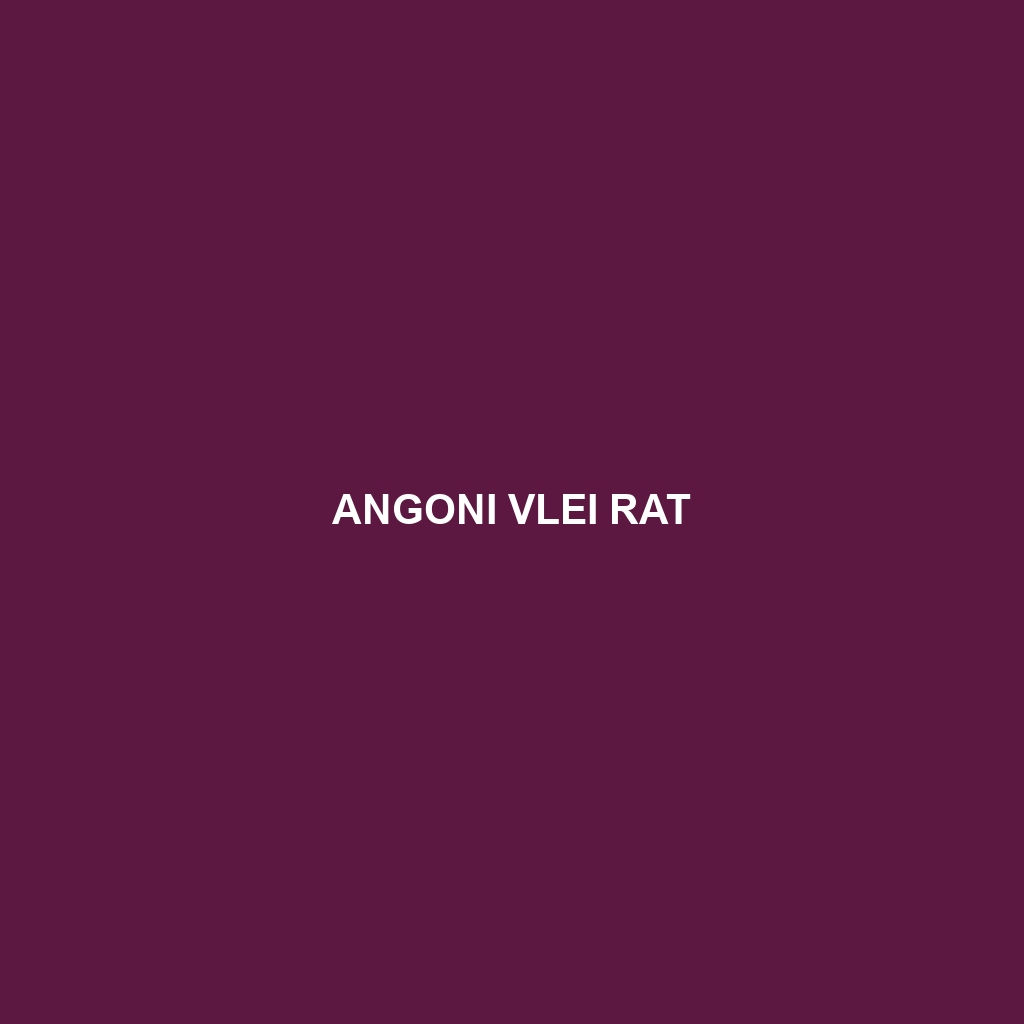Angoni Vlei Rat: A Comprehensive Species Description
Common Name: Angoni Vlei Rat
Scientific Name: Otomys angoniensis
Habitat
The Angoni Vlei Rat is primarily found in the wetlands and marshes of southeastern Africa, particularly in countries such as Zambia, Malawi, and Mozambique. These rodents thrive in areas with dense grass and sedges, making them adept at navigating through wet, grassy ecosystems.
Physical Characteristics
Measuring around 25-30 cm in length, the Angoni Vlei Rat exhibits a relatively stout body covered in soft, brown fur that provides excellent camouflage within its natural habitat. Its tail, slightly shorter than its body, is thin and naked, showcasing distinctive dark patches which are particularly attractive features. This species is characterized by its large eyes and ears, adaptations that enhance its nocturnal lifestyle.
Behavior
The Angoni Vlei Rat is typically nocturnal, displaying most of its activities during the night. These rats are social by nature, often found in small family groups. They are known for their burrowing behaviors, creating extensive tunnel systems that serve as shelters and hiding spots from predators. Their agility and keen senses help them evade threats, and they exhibit a variety of vocalizations for communication.
Diet
In terms of diet, the Angoni Vlei Rat primarily feeds on grasses, seeds, and aquatic plants, with a particular preference for succulent vegetation. Their foraging behavior is crucial for maintaining the health of their wetland ecosystems, as they aid in seed dispersal and plant regeneration.
Reproduction
The reproductive habits of the Angoni Vlei Rat are fascinating, with a breeding season that typically spans from September to November, coinciding with the onset of the rainy season. Females give birth to litters of 2-6 pups, which are born under protective cover in their burrows. Parenting is cooperative, with both parents playing roles in nurturing and protecting the young.
Conservation Status
The current conservation status of the Angoni Vlei Rat is listed as Vulnerable according to the IUCN Red List. Habitat loss due to agricultural expansion and drainage of wetlands poses significant threats to the delicate balance of their ecosystem.
Interesting Facts
One interesting fact about the Angoni Vlei Rat is its unique adaptation to its aquatic habitat; it possesses webbed toes that assist in traversing muddy terrains. Additionally, these rats exhibit remarkable resilience to flooding, often using their burrows to escape rising waters during heavy rains.
Role in Ecosystem
The Angoni Vlei Rat plays a vital role in its ecosystem as both a prey species for larger predators and a seed disperser for various plant species. Their burrowing activities help aerate the soil, promoting biodiversity in the wetlands they inhabit. This ecological interplay is crucial for maintaining the health of wetland environments.
